 Multiple Choice Questions
Multiple Choice QuestionsMatch Column- I with Column - 2 and choose the correct option from below.
| Column - I | Column - II |
| A. Marginal placentation | (i) Sunflower |
| B. Axile placentation | (ii) Mustard |
| C. Parietal placentation | (iii) Lemon |
| D. Basal placentation | (iv) Pea |
A-(iv), B - (iii), C- (ii), D- (i)
A -(iv), B- (iii), C- (i), D - (ii)
A-(iv), B-(i), C- (ii), D - (iii)
A - (iii), B- (iv), C- (ii), D - (i)
Which of the following is correctly matched
Monstera- Fibrous root
Dahlin- Fasciculated root
Azadirachta- Adventitious root
Basil- Prop roots
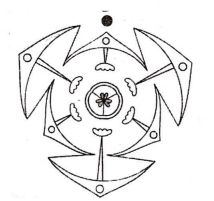
Plants having the above given floral diagram are
leguminous
dicots
medicinal and perennial
having pinnately compound leaves
Which of the following is the correct floral formula for the floral diagram given below?
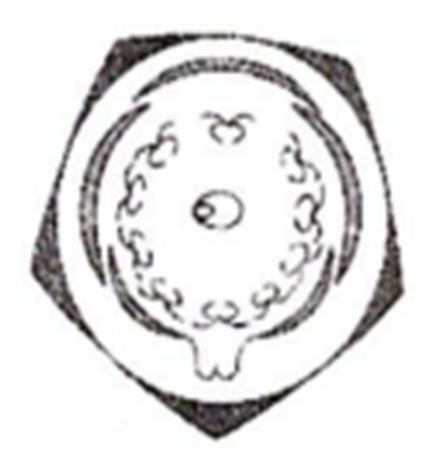
or (5) ()
%
Assertion : On plotting the length of the root against time, a linear curve is obtained.
Reason : An elongating rout exemplifies arithmetic growth.
If both assertion and reason are true and reason is the correct explanation of assertion.
If both assertion and reason are hue but reason is not the correct explanation of assertion.
If assertion is true but reason is false.
If both assertion and reason are false.
Identify the given figures A, B, C, D and E.
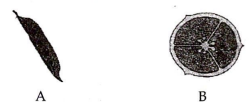
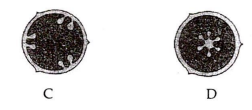

| A | B | C | D | E |
| Marginal | Axile | Free central | Parietal | Basal |
| A | B | C | D | E |
| Marginal | Parietal | Free central | Axile | Basal |
| A | B | C | D | E |
| Marginal | Axile | Parietal | Free central | Basal |
| A | B | C | D | E |
| Marginal | Axile | Parietal | Basal | Free central |
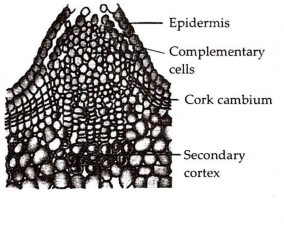
structure of lenticel
hydathode showing gaseous vapour exchange
fungus reproducing by spore formation
algae reproducing by spore formation.
Cleistogamy is leading over anthesis because
pollination agent is not required
it assures heterozygosity
it favours insect pollination
it allows xenogamy
Which of the following is true?
Umbel is a racemose inflorescence where all stalked flower aggregate on the flat receptacle
Raceme is a racemose inflorescence having main axis shortened & flower born acropetally
Spadix is a racemose inflorescence having pendulous spike with main axis much flattened.
Spike is a racemose inflorescence having sessile flowers
The branched sclereids present in hydrophytes are
osteosclereids
trichosclereids
macrosclereids
astrosclereids
D.
astrosclereids
Sclereids are highly thickened dead sclerenchyma cells with very narrow cavities. They may also be branched. They provide stiffness to the parts in which they occur. It is of many types : brachysclereids, macrosclereids, osteosclereids, astrosclereids, trichosclereids and filiform sclereids.
Astrosclereids are star-shaped, having various branches or arms. They are found in intercellular spaces of leaves and stems of many hydrophytes like Nymphaea.
Osteosclereid is the sclereid forming the hypodermal layer in many fruits and seeds. It also occurs in the leaves of certain xerophytes.
Trichosclereids are hard needle like branched cells found in some species of plants that serve the purpose of protecting the plant from herbivores.
Macrosclereid is one of the columnar sclereids that often form an outer layer in various fruits and seeds and also occur in the stems of some plants.
